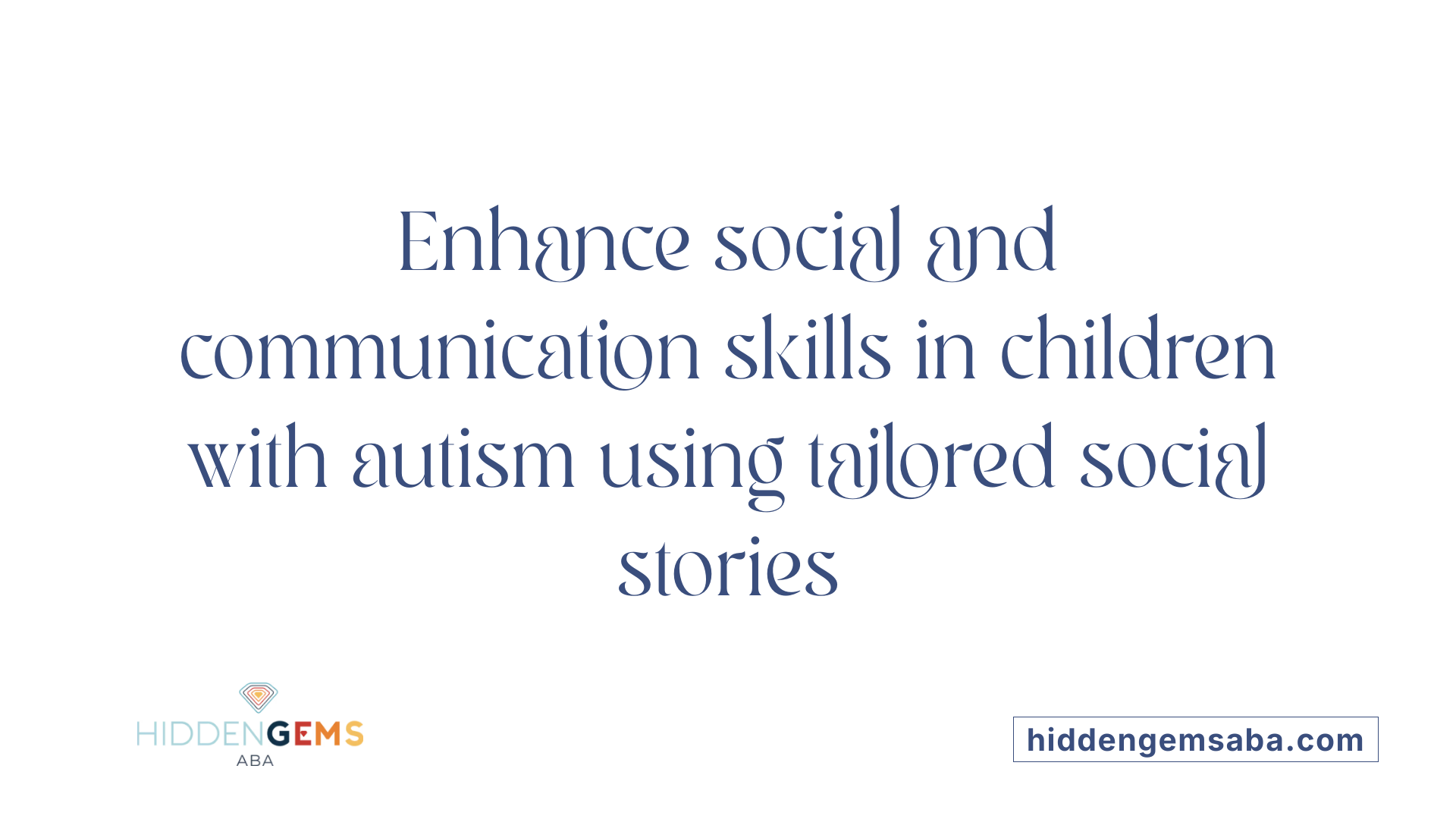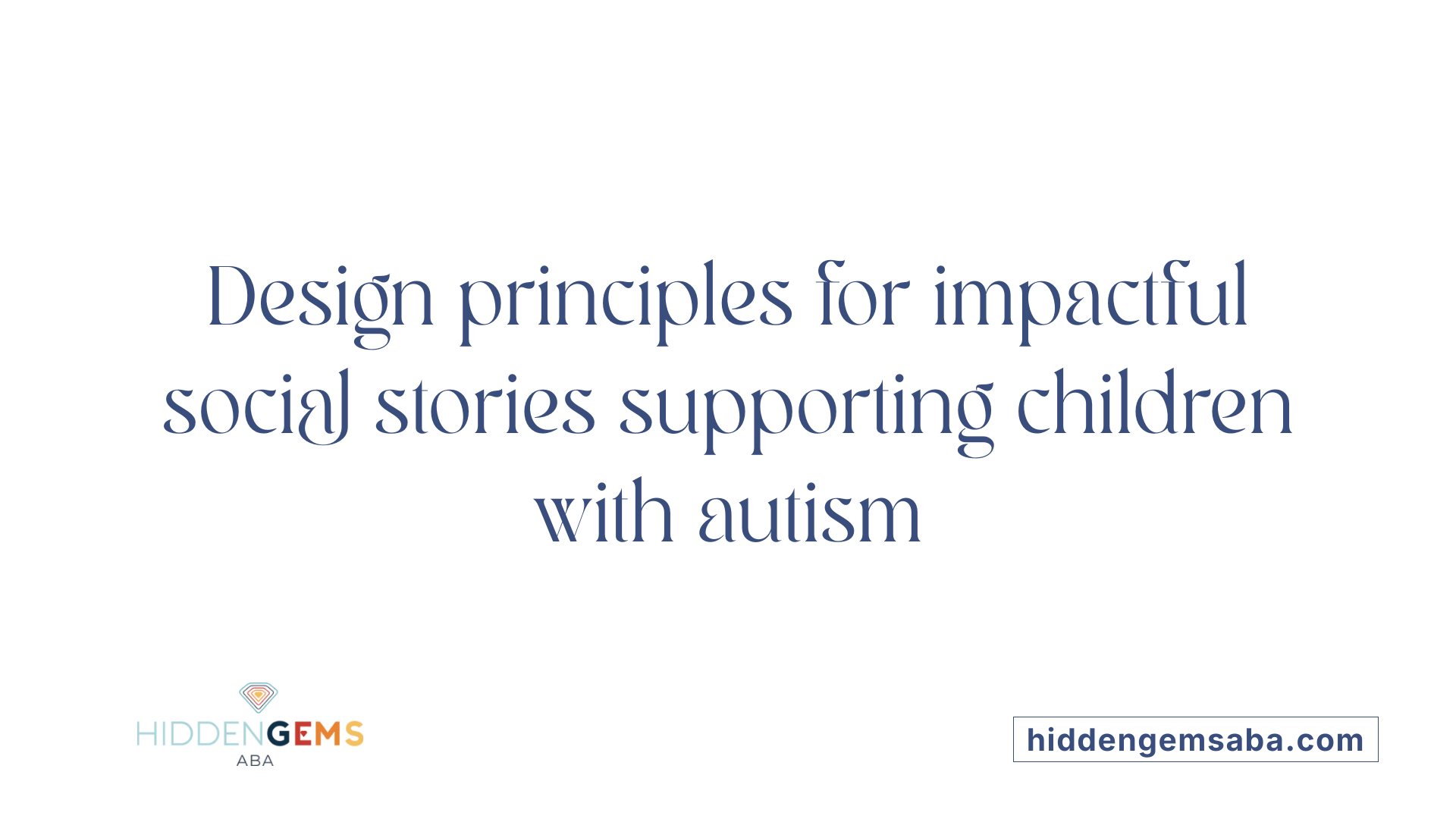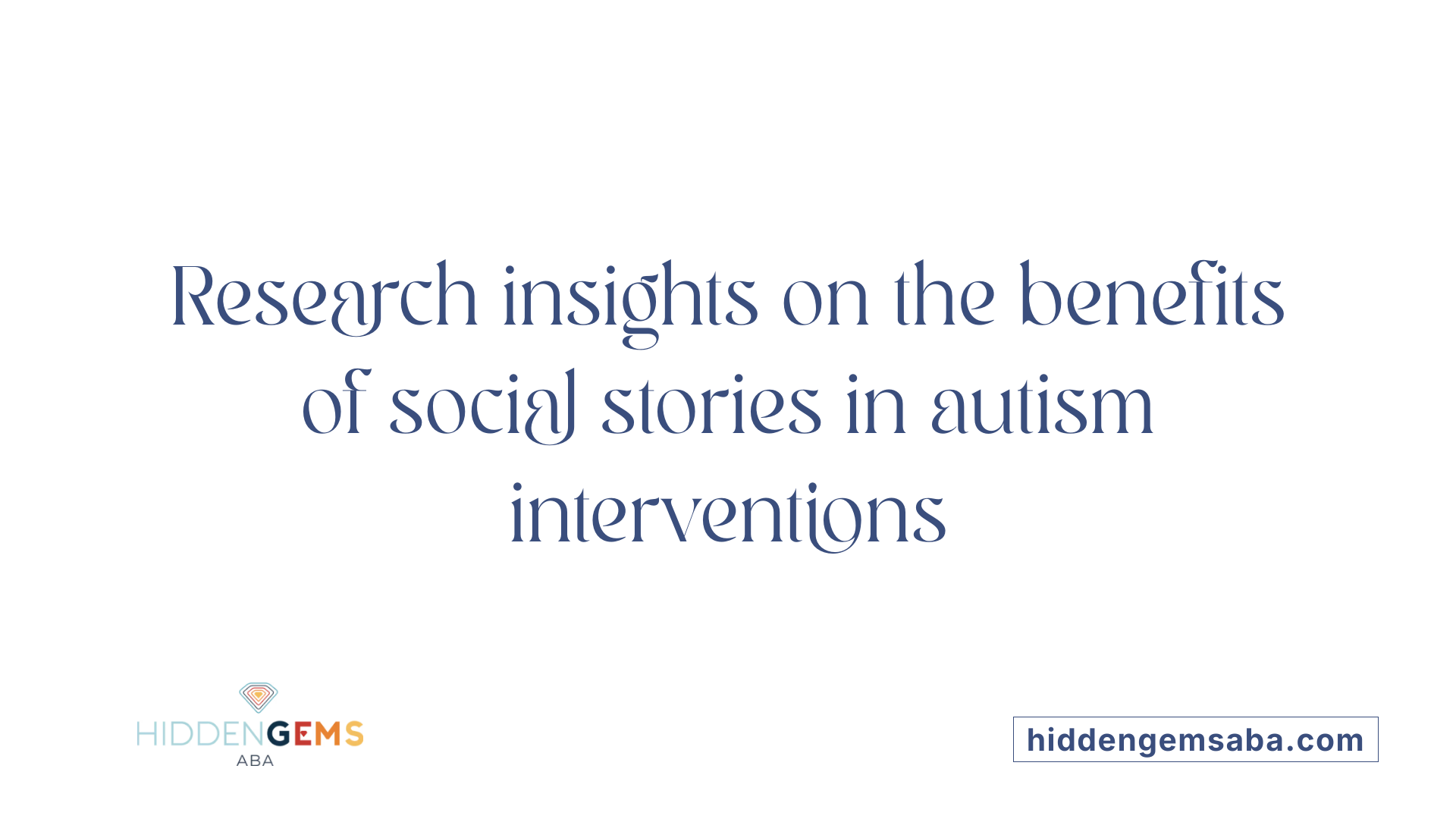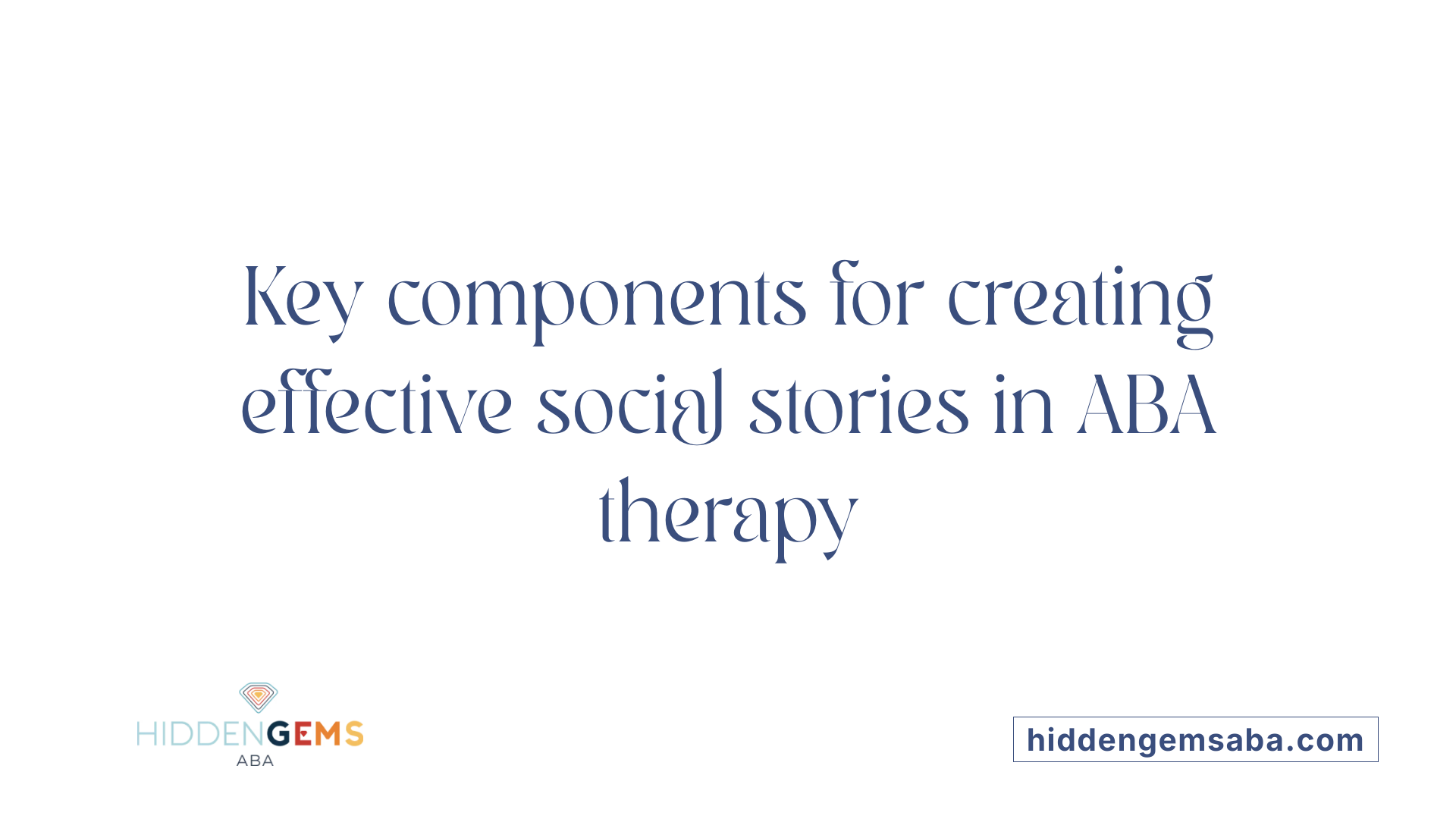Understanding Social Stories in ABA Therapy
Social stories form a cornerstone in ABA (Applied Behavior Analysis) therapy, offering a structured, personalized approach to support children with autism. Developed by Carol Gray in 1991, these concise, engaging narratives help children understand social cues, routines, and appropriate responses by explaining social situations in a clear and predictable manner. The purpose of social stories in ABA is to foster social communication skills, increase positive social behaviors, and reduce challenging behaviors rooted in uncertainty and misunderstanding. Tailored to each child's needs, social stories often incorporate visual aids, positive language, and specific behavioral goals, making them invaluable tools for helping children navigate social environments like schools, homes, and community settings.
What Are Social Stories and Their Purpose in ABA Therapy
What are social stories and what is their purpose in ABA therapy?
Social stories are brief, personalized narratives used to explain social situations, expectations, and appropriate responses in simple, clear language. They often include visual aids and are designed to be engaging to help children understand social cues better.
Developed by Carol Gray in 1991, these stories serve as practical guides that illustrate typical behaviors and social norms, making unfamiliar or confusing situations more predictable. They are tailored to each child's specific needs and are usually created with input from professionals such as speech pathologists or psychologists.
In Applied Behavior Analysis (ABA) therapy, social stories are primarily used to teach social communication skills. They help children recognize and interpret body language, facial expressions, and social cues. The stories also promote appropriate behaviors like making eye contact, sharing, taking turns, and coping with changes.
Overall, their goal is to support children in understanding social interactions, reducing anxiety, and building confidence. They are often read just before the upcoming social event or incorporated into daily routines, helping children respond more adaptively across settings such as school, home, or community environments.
Supporting Social and Communication Skills Development in Children with Autism

How do social stories support social and communication skills development in children with autism?
Social stories are structured tools designed to aid children with autism in understanding social situations and learning appropriate responses. They are short, personalized narratives that describe social contexts, expected behaviors, and emotional cues, often incorporating visual elements to enhance comprehension.
By clearly illustrating what to expect and how to behave, social stories reduce the uncertainty that can cause anxiety or challenging behaviors. For example, a social story about visiting the doctor might include descriptions of the environment, the typical procedures, and polite ways to interact. This preparation enables children to anticipate what will happen and feel more confident.
The approach emphasizes active engagement with the child through tailored stories that highlight social cues, emotions, and perspectives of others. For instance, a story might help a child recognize when someone is sad or pleased, and suggest appropriate reactions, enhancing their ability to interpret social signals.
Research indicates that social stories can improve social interactions by supporting skills like making eye contact, greeting others, sharing, and taking turns. They also foster emotional understanding, helping children recognize and interpret feelings, which is essential for effective communication.
Most importantly, social stories are designed to be used before specific situations—like a trip to the supermarket or a classroom transition—thus serving as preventative tools that prepare children for upcoming social demands.
While evidence from various studies suggests that social stories can lead to behavioral improvements and better social engagement, the scientific support is mixed. Experts agree, however, that when integrated into a comprehensive intervention plan, social stories are valuable for enhancing social understanding and communication skills.
In summary, social stories support social and communication growth through visual, clear, and positively framed narratives. They help children recognize social cues, understand others’ emotions, and practice socially appropriate responses, ultimately fostering greater independence and confidence in social settings.
Creating and Implementing Social Stories in ABA Programs

What are the steps in creating social stories?
Developing effective social stories involves several steps. First, identify the social situation or skill that needs to be addressed, such as sharing, calming down, or making eye contact. Collect baseline data to understand the child's current behavior related to that situation.
Next, collaborate with professionals—like psychologists or speech pathologists—and the child's family to gather detailed information about the child's needs, preferences, and comprehension level. Using this information, write a story using four types of sentences:
- Descriptive sentences that explain the context
- Perspective sentences that showcase different viewpoints
- Directive sentences that guide the child towards appropriate behavior
- Affirmative sentences that reinforce positive behavior.
Incorporate visuals, consistency, and positive language. The story should be concise, personalized, and engaging, making it easier for the child to relate to the content.
Finally, test the story in real settings, gather feedback, and adjust as necessary to ensure it effectively supports the child's understanding and skills.
How can stories be customized for individual needs?
Personalization is crucial for social stories to be effective. Tailor the content to match the child's developmental level, interests, and specific challenges. Use pictures or symbols if visual aids help, and include relevant details about familiar settings or routines.
Address specific behaviors or skills that the child is working on, such as coping with transitions or understanding social cues. The language should be positive and reflective of the child's experiences and abilities. Engaging the child's favorite topics or characters can increase motivation and engagement.
Professionals work closely with caregivers to ensure the stories are relevant and practical, maximizing their impact.
What are the guidelines for implementing stories, including timing and frequency?
Implementation is most effective when social stories are integrated into daily routines. Read the story aloud with the child at least once daily, preferably just before the relevant situation occurs, to prime understanding and reduce anxiety.
Consistent reading over a period—often around two weeks—helps reinforce the social skills or behaviors targeted. Reading can be done at home, in school, or during therapy sessions.
Professionals recommend using visual supports alongside the story and encouraging the child to ask questions or discuss the content. Reinforcing the story’s message after the social event can also help consolidate learning.
Including social stories as part of a broader behavioral intervention plan ensures a structured, supportive environment. Regular review and updates are essential to meet evolving needs and ensure continued effectiveness.
| Step | Description | Additional Notes |
|---|---|---|
| 1 | Identify Target Situation | Pinpoint the specific social skill or challenge |
| 2 | Gather Information | Collaborate with professionals and family |
| 3 | Write the Story | Use four sentence types, add visuals |
| 4 | Pilot the Story | Test in real scenarios, gather feedback |
| 5 | Implement Regularly | Daily reading, before events, ongoing review |
By following these structured steps, customizing content, and adhering to recommended timing strategies, social stories can be a powerful tool within ABA programs. They support children in understanding social norms and developing new skills, ultimately fostering greater independence and social confidence.
Key Components and Design of Effective Social Stories

What are the key components of effective social stories for children with autism?
Effective social stories are carefully crafted narratives that aim to improve social understanding and skills. They include several essential features to maximize their benefits.
First, they comprise four specific types of sentences:
- Descriptive sentences that lay out the social situation, setting, or behavior.
- Perspective sentences that help the child understand others' feelings and viewpoints.
- Directive sentences that guide the child toward expected behaviors.
- Affirmative or control sentences that reinforce positive responses.
Content focus and personalization are crucial. Each story is tailored to the child's unique needs, abilities, and social goals. This makes the story meaningful and engaging, thus encouraging the child's participation and understanding.
In addition, visual supports such as pictures, symbols, or diagrams are incorporated. These visuals complement the text, providing additional cues that help children grasp the social cues and expected behaviors.
Language used in social stories is clear, positive, and reflective. The tone should be supportive to reduce anxiety and promote confidence. The stories are kept concise to hold the child's attention and emphasize the core message.
Following Carol Gray’s guidelines, effective stories focus on meaningful content, ensure the tone is appropriate, and are structured to meet specific social objectives. This structured approach enhances comprehension and skill acquisition.
Although social stories are valuable tools, current research suggests their effectiveness varies. They are most beneficial when part of a broader intervention program, working alongside other evidence-based strategies.
In summary, the main components include carefully designed sentence types, personalized content, visual supports, and positive language—all tailored to the child's individual needs and social learning goals.
Research Evidence and Effectiveness of Social Stories

What is the evidence supporting the effectiveness of social stories in autism interventions?
Recent research provides encouraging evidence regarding the benefits of social stories for children with autism. A notable pilot randomized controlled trial explored the use of digitally-mediated social stories. Results showed significant reductions in maladaptive behaviors, along with improved understanding and decreased anxiety levels among participants. Importantly, these improvements were maintained at follow-up, demonstrating potential for lasting impact.
Further, a comprehensive scoping review analyzing 56 studies highlighted that social stories could effectively promote social skills, reduce problematic behaviors, and encourage social engagement. However, many of these studies used single-subject designs, which, while informative, limit the generalizability of the findings.
Meta-analyses have also assessed the overall impact of social stories. They suggest a small but meaningful clinical effect—indicating that social stories are practical, accessible tools that can support behavior change when properly implemented. Overall, the evidence underscores the value of including social stories in autism intervention strategies, especially when delivered digitally, though it also points to the need for more rigorous, large-scale research to better understand their full potential.
What are the limitations of current research?
While promising, current studies on social stories face some limitations. Many rely on small sample sizes and single-subject research designs, which can introduce bias and reduce the strength of conclusions. Additionally, the diversity of settings and individual needs makes it challenging to standardize interventions or establish broad, definitive results.
Some studies also use multiple interventions simultaneously, making it difficult to attribute observed changes solely to social stories. Moreover, the scientific support for social stories remains mixed, with some reviews indicating limited or inconclusive evidence. This variation highlights the importance of well-designed, large-scale studies to confirm efficacy and optimize implementation.
In summary, although social stories appear to be a helpful supplementary tool within autism interventions, ongoing research is essential to strengthen the scientific foundation and determine the best practices for their use.
Contributions to Behavior Management and Social Engagement
How do social stories contribute to behavior management and social engagement?
Social stories are powerful tools that support children with autism in navigating complex social environments. They work by providing explicit, straightforward descriptions of social situations, including the cues, usual activities, and expected responses. This clarity helps children understand what is happening around them and what they are expected to do, thereby reducing confusion and anxiety.
By aligning social stories with positive reinforcement strategies, children are more likely to imitate desired behaviors. For example, a social story about sharing can encourage children to take turns and cooperate with peers. This approach not only teaches social norms but also boosts confidence and promotes social reciprocity.
Additionally, social stories can effectively diminish problematic behaviors like tantrums or aggressive responses. When children understand the social cues they might otherwise miss, they feel more secure and are less likely to react inappropriately.
The benefits extend into various settings, including classrooms and homes. Regular review and strategic placement of social stories make learning portable and adaptable, ensuring children generalize their new skills across different environments. This structured, customized approach improves social participation by helping children become more comfortable and competent in social interactions.
Overall, social stories serve as individualized, clear guides that foster positive behaviors and enhance children's ability to engage confidently with others, making social experiences more accessible and less intimidating.
Development, Design, and Core Elements of Social Stories

What is the development, design, and key components of social stories for ABA interventions?
The creation of social stories begins with pinpointing a specific social skill or situation that the child needs to understand or navigate better. Professionals, such as psychologists or speech therapists, typically gather information from parents or caregivers to assess the child's current behaviors and needs.
Once the target is clear, a structured narrative is crafted following the guidelines established by Carol Gray. These guidelines emphasize clarity, positivity, and sensitivity to the child's developmental level. The story is concise, focusing directly on the scenario and expected behaviors.
The core of a social story consists of four main types of sentences:
| Sentence Type | Purpose | Example |
|---|---|---|
| Descriptive | Explains the situation clearly | "At the supermarket, I see many different foods and carts." |
| Perspective | Shows understanding of others’ feelings or thoughts | "The cashier is happy when I say 'hello.'" |
| Directive | Guides the child on what action to take | "I will ask politely if I want a toy." |
| Affirmative | Reinforces positive behavior and self-efficacy | "I can wait my turn patiently." |
Personalization is essential. Stories are tailored to the child's age, interests, and specific social challenges. This customization makes the story more relevant and engaging.
Visual supports are often added to reinforce comprehension. Photos, drawings, or symbols related to the scenario help children visualize the situation, making abstract concepts easier to grasp.
Effective social stories are characterized by their positive tone, clarity, and meaningful content. They serve as practical guides, helping children understand social cues, anticipate what will happen, and respond appropriately. This approach supports behavior change, reduces anxiety, and builds confidence in social settings.
In summary, well-designed social stories combine careful planning of content and structure, personalization, and visual aids, making them effective tools within ABA therapy for fostering social understanding and skills among children with autism.
Maximizing Social Stories in Autism Interventions
Incorporating social stories into ABA therapy offers a personalized, structured approach to fostering social and communication skills in children with autism. While current research indicates promising outcomes, ongoing studies are essential to solidify their effectiveness and identify optimal strategies. When carefully created and appropriately implemented, social stories serve as a versatile tool for promoting positive behaviors, reducing anxiety, and building social confidence. Professionals, parents, and caregivers are encouraged to collaborate in designing engaging narratives that meet individual needs, incorporate visual supports, and are integrated into daily routines. As part of a comprehensive intervention plan, social stories can significantly enhance social understanding and facilitate meaningful social participation, contributing to a child's overall development and quality of life.
References
- Social stories and autism | Raising Children Network
- Social Stories for Kids in ABA Therapy - ABATherapistJobs.com
- Social Stories: A Tool for Autism Support
- How Social Stories Can Help in ABA Therapy | Childwise
- Social Stories(™) - Association for Science in Autism Treatment
- Social stories: an intervention technique for children with Autism
- The Use of Social Stories as a Preventative Behavioral Intervention ...
- Social Stories and Autism - LeafWing Center






